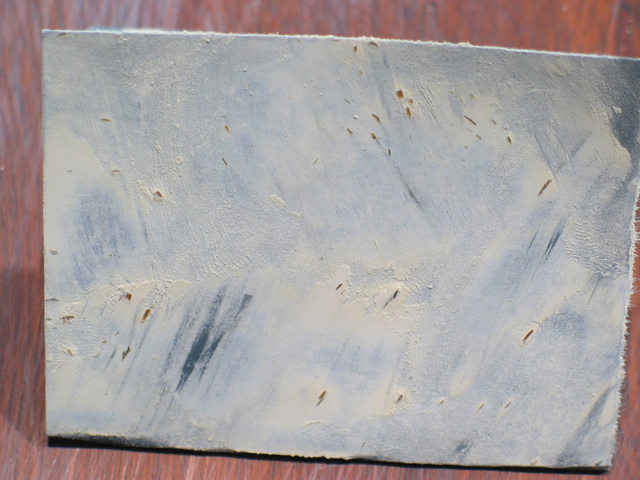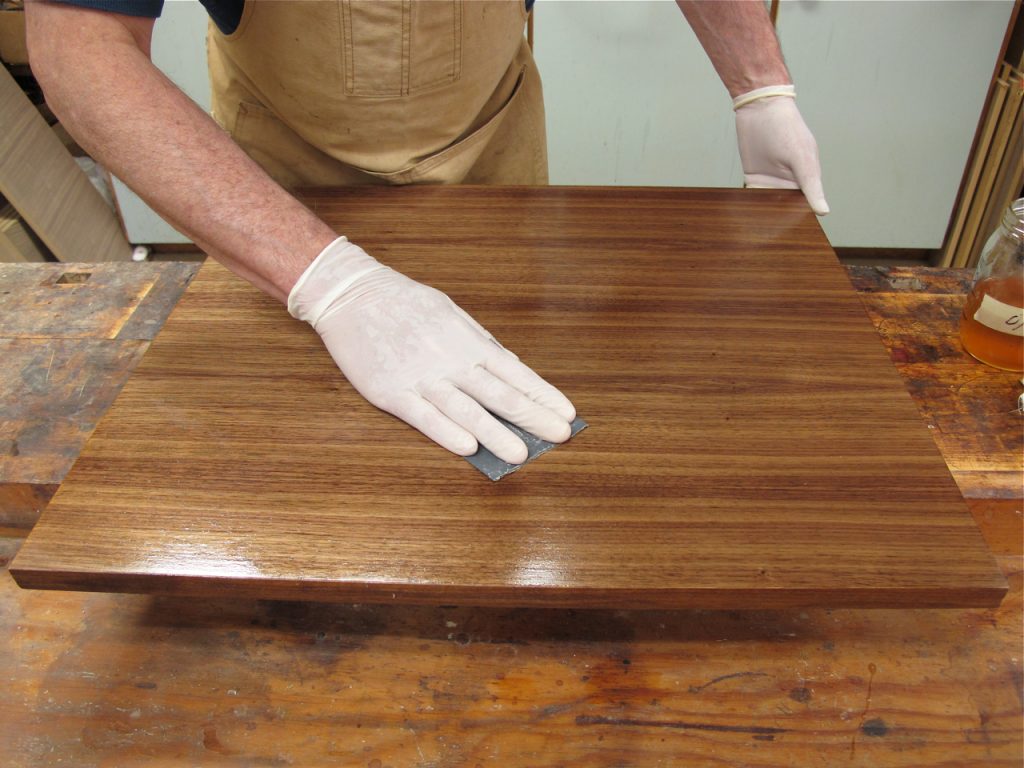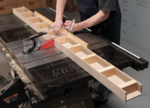We may receive a commission when you use our affiliate links. However, this does not impact our recommendations.

Wet/dry sandpaper with lots of corns.
I was visiting a painter friend recently at a house where he was spraying lacquer on kitchen cabinets. I noticed many sheets of used sandpaper lying around with numerous “corns” embedded in each. A corn is the name used to describe little pieces of finish (or paint) stuck to sandpaper. This got me thinking of ways to avoid corns because they can seriously impede efficiency, not to mention increase cost because of all the sandpaper that is wasted.
Corns are finish that has been melted by the heat created during sanding, and they are large enough to leave much deeper scratches in the finish than those created by the sanding grit. These scratches will then have to be sanded out to keep them from telegraphing through the next coat, or detracting from the appearance in the final coat.
(All finishes should be sanded at least once, usually after the first coat, to remove the roughness and create a smoother final result.)
Some finishes are more likely to cause corning than others. These include oil-based varnish, lacquer and shellac. Oil-based polyurethane, water-based finish and high-performance (catalyzed) finishes don’t corn as easily. Varnish and lacquer sanding sealer also resist corning because they powder so easily when sanded. This is the reason to use sanding sealer under alkyd varnish (not polyurethane varnish because the sanding sealer will reduce the bonding strength) and nitrocellulose lacquer. The sanding sealer increases your efficiency on large surfaces, such as kitchen cabinets.
All types of oil finishes (not wiping varnish, which is often marketed as oil) should also be sanded to make them feel smooth. The easiest way to do this, since dust isn’t a problem because you’re wiping off all the excess, is to use the same oil as a lubricant for the sandpaper.

Sanding the second coat of oil finish using the same oil as a lubricant.
Though it’s often difficult to totally avoid corns when sanding, here are three suggestions:
Let the finish dry longer before sanding. Clearly, a finish that isn’t totally dry will corn quicker under the heat created by the sanding than a finish that is fully dry. Alkyd varnish takes a long time to fully cure.
Use a stearated (dry-lubricated) sandpaper. Stearated sandpaper is coated with the same zinc-stearate dry lubricants that are contained in sanding sealer. The stearates improve the powdering characteristics and help resist the corning.
Use a lighter touch (to create less heat). Reduce the pressure when sanding. Pressing on the sandpaper creates more heat.
You can also use a lubricant (water or oil) with the sandpaper. But it’s best to wait until the final, or next to final, coat to do this so there’s enough thickness to keep the liquid from penetrating to the wood.
Further Reading: Common Staining Problems and Their Fixes
Here are some supplies and tools we find essential in our everyday work around the shop. We may receive a commission from sales referred by our links; however, we have carefully selected these products for their usefulness and quality.









